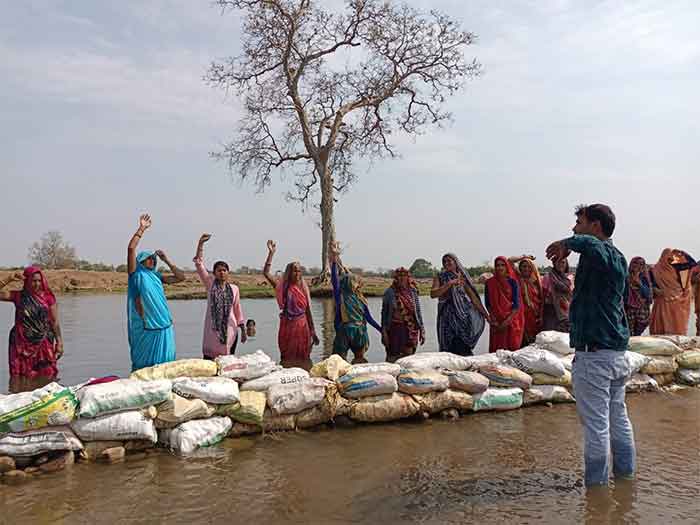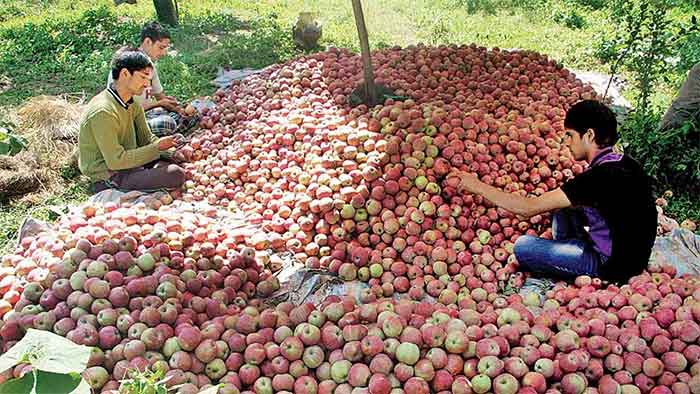
India has the largest number of people living in villages, and the percentage of rural population here is also one of the highest among the leading countries. According to conventional economic wisdom, this should change fast with economic development, but if one is thinking in terms of a ‘New Economics’ that is needed for resolving climate change and related environmental problems, then the situation of a larger number of people living in rural settlements may actually prove to be an asset if the right policies are adopted. Hence it may be useful to look very broadly at how India’s villages have been changing and what can be improved, despite the obvious problems in attempting such a broad analysis given the diversity of conditions that exist in various villages.
In many villages a significant number of households do not own any farmland (or almost so), and they are often the poorest and the most vulnerable. Earlier there were important programs in place to try to make available at least some farmland to them, but these have been gradually phased out, and there is hardly any talk of this now. The plea given is that no extra land is available for this, but the fact is that some big landowners in many villages still have a lot of land and land is almost always found readily for corporate or government purposes whenever needed. Hence the landless should also get at least a little farmland. Where this is not possible, this writer has often pleaded, there can be a scheme of re-greening wasteland with mixed indigenous species trees, paying wages till trees are big enough to provide various minor produce, include fodder, to support a community of people who were earlier landless but now have ownership of a significant chunk of land full of trees.
Till about six decades back almost all of the farmland was cultivated in a way that was environment friendly. However with the advent of the so-called ‘green revolution’ farming became more and more ecologically harmful, also became more dependent on fossil fuels. It is one of the most often repeated lies that no alternatives (other than green revolution) were available for increasing food production. It was perfectly possible for India to become self-reliant in food, in fact in a more comprehensive, healthier and sustained way, on the basis of indigenous seeds and ecologically friendly ways. An exaggerated crisis of food shortage was artificially created to somehow present a case that the country will be doomed without the green revolution. The same can be said about many allied changes which this writer has been referring to as ‘the greater green revolution’. The reality is that agro-ecology approach based on small farmers was always capable of feeding the country better in a healthier and ecologically friendly way, and still is, and in fact the traditional farming system disrupted by the green revolution was quite close to agro-ecology and what we need for climate change mitigation and adaptation. In fact the leading rice scientist of the country then Dr. R.H. Richharia told me that he was ready with a big breakthrough on the basis of improved diversity of indigenous varieties when his work was disrupted by insisting on new green revolution varieties and when he protested, he was victimized and deprived of his research opportunities. Similar high-level impositions are being made today by trying to introduce GM food crops which are likely to be even more harmful. The country’s food and farming would be safe with non-GM agro-ecology, based on small farmers.
If food processing and several ancillary activities are also pursued in ways which provide more scope for small or cottage scale work within or very close to villages, making use of skills that are likely to already exist in villages, then this can be another big source of livelihoods. The fact that agro-processing is increasingly pursued in those ways, using technologies and capital-intensity only available to big players, that give less space to small players, reduces the scope of rural livelihoods.
A typical village in India has a proliferation of government welfare schemes including free or highly subsidized food grain ration to meet about half of the monthly need for grain ( most people actually access this), a scheme that guarantees employment for 100 years ( which is often implemented poorly and far short of the target, but has given very good results when and where implemented properly), a scheme of providing new and better houses for the poorest (a much cherished scheme whose implementation has been often marred by corruption), schemes for taking toilets and tap water to all rural households ( which has uneven implementation in different areas), some other schemes for nutrition and maternity benefits as well direct cash transfers for farmers and some vulnerable sections. In addition various state governments have their own schemes. Hence there are quite a number of already existing schemes which with more funds and improved implementation can provide significant relief as well as, for example in the case of rural employment scheme, also help to improve soil and water conservation and other sustainability aspects in villages.
Women have traditionally faced more social restrictions in villages, but in recent times there are also many inspiring success stories of women playing very important leadership roles in villages, supported partly by new legislations. Still, much remains to be done for gender justice. India also has important achievements in setting up an elaborate network of rural self-governance called panchayati raj, with reserved seats for vulnerable sections of society as well as for women. Again the practice often falls short of what the legislation aimed for, while the laws also need improvements.
Briefly, there are many schemes and laws already in place in India which if better implemented can contribute much to increasing the welfare of people, while in other contexts important policy changes are also needed. A sincere and honest effort based on justice, equality, peace, social harmony, protection of environment and biodiversity should be made with increased budgetary resources for rural India to improve welfare of vulnerable and poor people and to show the way forward for agro-ecology based on small farmers. Climate change adaptation and mitigation should be taken forward within this framework, with an important role assigned to people based afforestation relying on mixed indigenous species, which can hopefully make up for the deforestation of recent decades to a significant extent.
Bharat Dogra is Honorary Convener, Campaign to Save Earth Now. His recent books include India’s Quest for Sustained Farming and Healthy Food, Planet in Peril, Protecting Earth for Children and A Day in 2071.















































